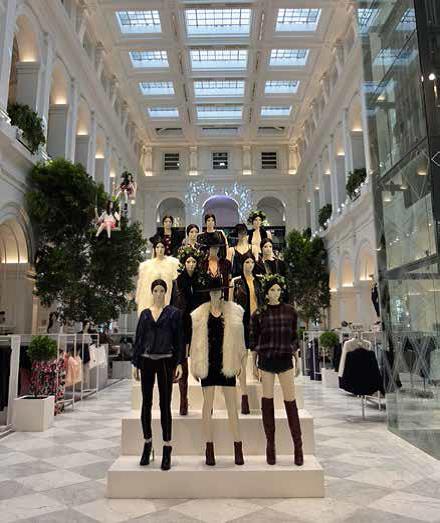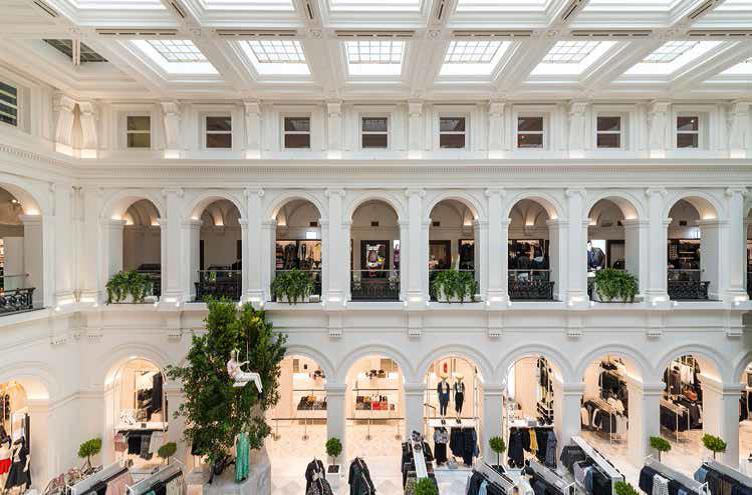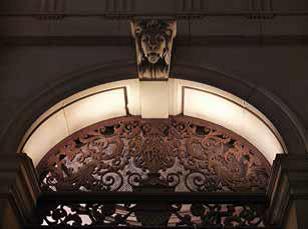Australia’s first H&M store is on trend, with LED lighting and controls. Kathrine Anker reports

When H&M arrived in Australia last year, it did so in style with a vast, mostly LED-lit flagship store in Melbourne’s former General Post Office building. The building’s long history, and its 18m-high ceiling, presented the team with a challenge. ‘The objective was to pick out the character of the building,’ says Richard Bolt, a lighting designer at DPA Lighting Consultants who worked on the project. ‘It’s almost theatrical. If you walk in as a customer, the first thing you’ll see is this fantastic building, rather than the clothes. Then, of course, your eye will revert towards the clothing.’
The building’s massive retail space is characterised by a three-storey atrium. Linear LED fittings from Philips Color Kinetics have been mounted in troughs to emphasise the roof structure and the surrounding arches, with a mixture of optics providing wide beams and linear grazing. iGuzzini Laser Blade fittings downlight the retail space, and the trees on the trade floor have been uplit with fixtures from Lumiscape.
‘The actual lighting equipment is very minimal in terms of its look. It’s a mixture of concealed light fixtures and small-scale visible fixtures,’ says normal trading times, all light sources are warm white with a colour temperature of 3000K.
The mannequins on podiums and swings have been emphasised with perimeter spotlights on the
columns around the atrium. ‘We used a metal halide fixture from XAL to light down on the mannequins from first storey height because we weren’t able to source a narrow enough LED optic at the time,’ Bolt explains.
The DPA team worked closely with Heritage Victoria to ensure the lighting would suit the architecture and not damage anything. It was a requirement that the lighting equipment could be removed with minimal harm to the fabric of the building.
Whatever DPA decided to do also had to fit in with the existing architectural lighting scheme, which had been installed by the landlord of the building a year before. And it was important that everything that was specified could be procured locally. ‘It was very much a close collaboration with the local architects and local manufacturers,’ says Bolt. iGuzzini was an exception, being from Italy, but the company is represented in Melbourne and getting more stock is unlikely to be a problem. For the control of the exterior light, DPA worked with the existing Bolt. ‘It’s a combination of expressing the original architectural theme while ensuring that we achieved 200 lx on the sales floor in a controlled manner.’
Daylight savings
Skylights provide plenty of daylight in the atrium, so a control system from Dynalite has been installed to make the most of it. Facility managers at H&M have access to a control clock and a number of different lighting scenes that can be chosen according to the time of day. ‘Knowing there’s an abundance of natural light from the skylights in the atrium, we’ve turned off some of those channels and as the day progresses and natural light diminishes, the artificial light builds itself up at the top of the atrium,’ says Bolt.
A manual override control panel allows managers to change the lighting to a party mode. ‘H&M are not particularly into coloured light and we agree with them,’ says Bolt. ‘They wanted a warm white light scheme, but with the opportunity of using coloured RGB LED fixtures for special occasions such as Australia Day or Breast Cancer Awareness week. For supplier and Australian controls manufacturer Dynalite.
‘Together we were able to show H&M what they had inherited and work out what would be preferable to install on top of that base scheme outside,’ says Bolt.
The DPA team particularly wanted to improve the way the tower of the building and the entrances had been lit. ‘The vaulted arcade that wraps itself around the building had very orangey sodium light,’ explains Bolt. ‘We wanted to flick light across the arches with a more controlled optic.’
Exterior lighting is controlled by the Dynalite system but synchronised with the old system. ‘Rather than floodlighting, we were skimming light up columns and improving the arcade lighting,’ says Bolt.
Using mainly LED light sources means that the lighting will also be sympathetic to H&M’s energy budget. The store has achieved an electrical load of 12W/m2 for downward light and 10W/m2 for the architectural lighting to the arches, trees and ceiling.


